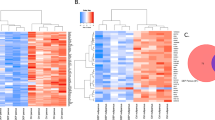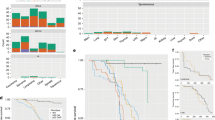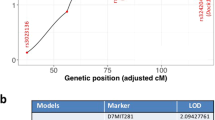Abstract
Tamoxifen is an effective agent preventing mammary carcinogenesis in rats but causing liver tumours. Idoxifene is a more potent antioestrogen and is effective in patients with advanced breast cancer. We therefore compared the effects of idoxifene with tamoxifen on mammary carcinogenesis and hepatic DNA adduct formation. To do this, we undertook a study designed to compare tamoxifen with idoxifene as a chemopreventive agent in rats inoculated with N-methylnitrosourea (MNU) and also measured hepatic adduct formation. We examined the time to mammary tumour development in 272 female Ludwig/Wistar/Olac rats treated with MNU followed by tamoxifen (5 mg kg(-1)), equimolar idoxifene or vehicle three times a week for up to 24 weeks. To determine duration of effect, a second study was carried out whereby all of the 129 animals surviving at the end of treatment were entered into a surveillance programme for 27 weeks after the end of the administration period. Hepatic DNA adduct formation was examined by 32P-postlabelling in a group of rats after 24 weeks' treatment. In the first study, both idoxifene and tamoxifen were effective in preventing tumour growth as only 2 out of 21 (10%) MNU and vehicle-treated animals were alive and tumour free after 24 weeks compared with 13 out of 22 (59%) animals receiving MNU followed by idoxifene or tamoxifen (P < 0.001). The second study showed that, in both idoxifene- and tamoxifen-treated animals, a progressive regrowth of tumours occurred after cessation of therapy, as by the end of the observation period only four idoxifene-treated animals and one tamoxifen-treated animal were free from disease. In the subset of animals tested, tamoxifen-treated animals had approximately 100 times higher levels of DNA hepatic adducts than idoxifene-treated animals. Adducts were not seen in the control group. These results indicate that idoxifene is as effective a chemopreventive agent as tamoxifen in the rat while causing only very low levels of DNA adducts in liver tissue and suggest that idoxifene may be a well-tolerated chemopreventive agent in women who are at increased risk of breast cancer.
This is a preview of subscription content, access via your institution
Access options
Subscribe to this journal
Receive 24 print issues and online access
$259.00 per year
only $10.79 per issue
Buy this article
- Purchase on Springer Link
- Instant access to full article PDF
Prices may be subject to local taxes which are calculated during checkout
Similar content being viewed by others
Author information
Authors and Affiliations
Rights and permissions
About this article
Cite this article
Pace, P., Jarman, M., Phillips, D. et al. Idoxifene is equipotent to tamoxifen in inhibiting mammary carcinogenesis but forms lower levels of hepatic DNA adducts. Br J Cancer 76, 700–704 (1997). https://doi.org/10.1038/bjc.1997.449
Issue Date:
DOI: https://doi.org/10.1038/bjc.1997.449



